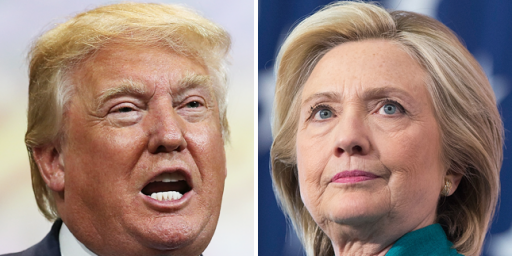Should Superdelegates Be Counted Yet?
Chris Bowers argues that the media narrative of the Democratic nominee race is flawed because it currently counts superdelegates. The short version of why? Because they can change their minds at any time.
Super delegates have always made up, or changed, their minds en masse to endorse the candidate with the most popular support from primary and caucus participants. As such, the way nearly all super delegates vote at the convention is dependant on how Democratic primary voters and caucus goers vote before the convention. Since Democratic primary and caucus goers have not yet finished voting, there is no solid way to tell how super delegates will vote at the convention. To put it another way, super delegate counts are projections, not actual totals. Until the cause of how super delegates vote has played itself out, it simply does not make any sense on either a democratic or mathematical level to include super delegates in delegate totals. To do so is precisely analogous to including in delegate counts future delegate totals from states that have not yet held nominating contests by using polls to determine future delegate counts. While no news organization would ever include such future pledged delegates projections in their delegate counts, almost all of them are doing exactly the same thing by including future super delegates projections in their delegate counts.
This primary season, polls have often been contradictory, fluid, and such plain wrong. That is why news organizations have waited until actual voting results have been completed before adding up pledged delegate totals. Unfortunately, to date they have not waited to include super delegates, whose vote is also dependant on how primary and caucus goers vote, before adding them to delegate totals. That needs to change.
This is, I think, entirely correct. When considering the race for the nomination on either party, it doesn’t make sense to count superdelegates until their votes are actually cast. This is because, as James points out below, the media narrative matters.
Consider, as a case in point, this article on last night’s primaries.
Sen. Barack Obama swept the Louisiana primary and caucuses in Nebraska and Washington state Saturday night, slicing into Sen. Hillary Rodham Clinton’s slender delegate lead in their historic race for the Democratic presidential nomination.
Obama is only “slicing into Sen. Hillary Rodham Clinton’s slender delegate lead” if you count the superdelegates. If you look at only the numbers of pledged delegates, this sentence would have read thusly:
Sen. Barack Obama swept the Louisiana primary and caucuses in Nebraska and Washington state Saturday night, increasing his current delegate lead over Sen. Hillary Rodham Clinton in their historic race for the Democratic presidential nomination.
That changes the narrative a bit, doesn’t it?
Currently, among the delegates who are pledged to vote at the Democratic nomination, Barack Obama leads Hillary Clinton 918 delegates to 885 delegates. Making him the front runner against those delegate votes that are set in stone. Hillary Clinton only has the lead if you count superdelegates–superdelegates who may not actually end up voting for her.
It’s really time that the media stopped counting them.





I don’t think that’s quite right. I’m not sure whether to think of superdelegates as sheep or snakes but they do like to back winners. Not just primary winners but winners in the general election. As of my last check the superdelegates were breaking 2:1 for Hillary Clinton.
Yes, that could change if the prevailing wind does. But I think it’s going to take more than Obama securing some delegates in a few small states before they’ll break en masse.
Texas, Ohio, and Pennsylvania have more delegates (if I count correctly) than all the other remaining Democratic caucuses and primaries put together. Obama will need to pick up a sizeable proportion of the delegates in at least one of those states for the superdelegates to bolt.
Dave,
Let’s not forget, though, that over 3/4 of Clinton’s superdelegates pledged before Iowa. If Obama starts pulling away (and I think he will–Texas’s half-primary, half-caucus will be really helpful for Obama), I wouldn’t be surprised to see some of Clinton’s superdelegates fade away.
I would chart a middle course. I would count the delegates won and the super delegates pledged, but break them out separately. To not track the super delegates pledged would not give the whole story. But to report them with the same “firmness” as the delegates won in the primary is also not reasonable.
Of course it is all much more complicated than this. Delegates for some of the caucuses are yet to be actually awarded. Further, delegates awarded to people no linger in the race generally become unpledged, though some may be allocated by the state committees. The bottom line is that if the nomination fight gets down to the point of really needing to count every vote, it will get tricky indeed.
Yetanotherjohn is exactly right. The cure for this is more thorough disclosure — not a rule that either does or doesn’t include them. Sometimes a complicated situation takes more words to explain because it’s, well, complicated.
yaj, beldar, etc.
That is already what is being done by CNN and the AP. Both breakdown the numbers by delegates, super delegates, and by state.
If you want the numbers without the caucus delegates that are not yet entirely firm the NYT has that number along with the AP totals.
I think Alex is speaking more to whether the super delegate totals should be included when framing the horse race stories.
Depending which of the numbers you choose the story comes out quite diffently. NYT method looks best for Clinton (up 171). CNN or AP with SDs have it quite close, with a slight edge for Clinton (~30). Take away the SDs and CNN and AP have Obama up by about 60. Pick your number based on what you want the race to look like.